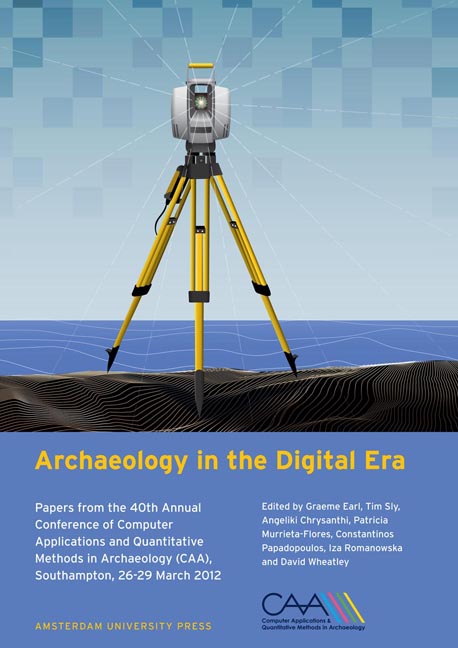 Archaeology in the Digital Era
Archaeology in the Digital Era Bayesian Spatial Modelling of Radiocarbon Dated Archaeological Artefacts Using R-INLA
Published online by Cambridge University Press: 16 February 2021
Summary
Abstract:
Radiocarbon dated archaeological artefacts can be used as spatiotemporal proxies for prehistoric population size and distribution. In this paper, a radiocarbon dataset from eastern Fennoscandia is predisposed for tests with statistical software suitable for spatial and spatiotemporal analysis. We present a Bayesian computing approach using the recently developed R-INLA (Integrated Nested Laplace Approximation in R-environment) software. We adapt our previous spatial model to R-INLA comparing the results with our earlier MCMC (Markov chain Monte Carlo) approach. We also take the first steps of employing a spatiotemporal Poisson point process model into the analysis. A series of test runs show that results are roughly congruent with MCMC approach. Moreover, the LNLA approach proves exponentially faster and memory-efficient. Model families are defined through compact R statements, which allows for systematic exchange between different statistical models. This paper is part of a multidisciplinary effort in spatiotemporal analysis of archaeological data from eastern Fennoscandia.
Keywords:
Spatiotemporal Analysis, Eastern Fennoscandia, R-INLA
Introduction
In this paper, we present spatial analysis with the R-INLA software using a set of radiocarbon dates and a dataset from Typical Comb Ware (TCW) from the Finnish National Archaeological Database. The data is the same as used previously by Kammonen et al. (2012) in spatial analysis with MCMC methods of the WinBUGS software. The results are compared with those of the previous approach. In addition, performance of the R-INLA software is assessed with a simple benchmark test in laptop computer environment.
Archaeological background
During recent years, the archaeological record of eastern Fennoscandia, especially the territory of Finland and ceded Karelia (Fig. 1), has faced increased research activity on both sides of the border. Ceded Karelia refers to the region southeast of the current borders of Finland, which was part of the country before Moscow Armistice in 1944. Due to post-World War II standstill, most of the Karelian Isthmus remained only fractionally studied until the collapse of Soviet Union. Due to several Fenno-Russian joint research projects the Stone Age research in northern part of Karelian Isthmus has now been intensified (see e.g. Lavento 2008; Nordqvist et al. 2009; Seitsonen et al. 2012).
The archaeological records from all of the excavations conducted in Finland have been documented in the Registry of Ancient Monuments, a national database of the National Board of Antiquities (http://kulttuuriymparisto. nba.fi/netsovellus/ rekisteriportaali/mjreki/ read/ asp/r_default.aspx).
- Type
- Chapter
- Information
- Archaeology in the Digital EraPapers from the 40th Annual Conference of Computer Applications and Quantitative Methods in Archaeology (CAA), Southampton, 26-29 March 2012, pp. 414 - 419Publisher: Amsterdam University PressPrint publication year: 2014


